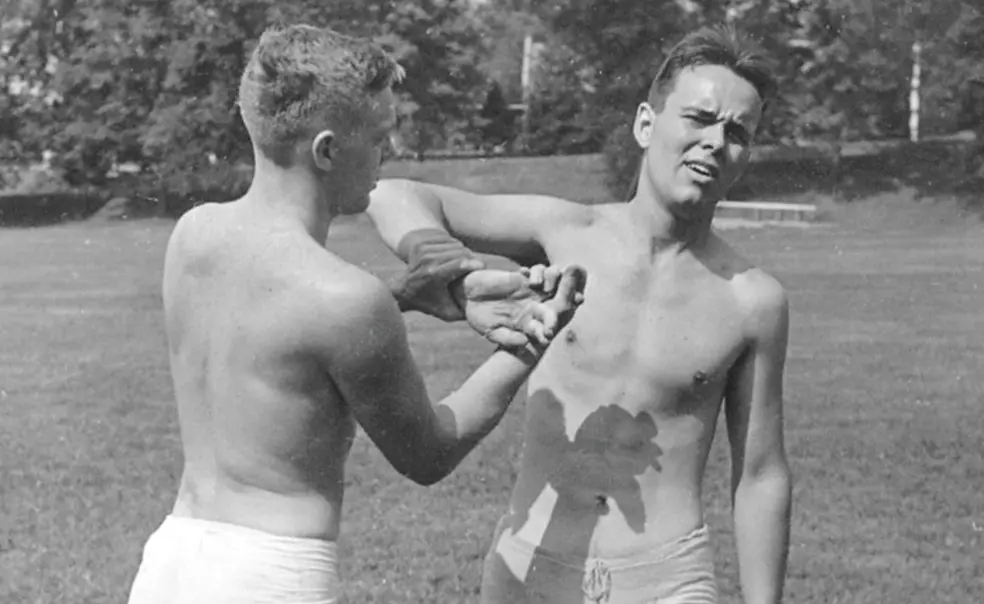The summer of 1942 was unlike any Princeton had experienced. Now at war, the United States expected citizens and institutions to dedicate themselves to vanquishing the Axis powers. To further this national objective, the University instituted a nine-week summer term intended to enable undergraduates to complete their studies in three years. Discipline was tightened, extracurricular activities were curtailed, and a mandatory physical-fitness program to condition participants for “actual war service” was begun.
President Harold W. Dodds *1914 believed that Princeton’s students took to heart the seriousness of what for many was a prelude to enlistment. “Their response during the Summer term,” he wrote, “has indicated that they agree to the principle that slackness in work is a dereliction of duty to the country in its hour of need.”
Less impressive was student reaction to New Jersey’s first statewide daytime air-raid drill July 9, a 20-minute test that, in the words of The New York Times, “provided a dramatic picture of how a surprise enemy daylight raid would paralyze the normal activities of more than 4,000,000 civilians scattered over 8,224 square miles.”
According to The Daily Princetonian, “Undergraduates were on the whole slow to respond to the alert; many confused the signal with the Borough fire siren.” While classrooms were evacuated, participants in the physical-fitness program did not disperse — two forms of preparedness in conflict.
Chief University Air Raid Warden Laurence Fenninger 1909 urged students to familiarize themselves with Princeton’s air-raid regulations and mustered 119 undergraduate wardens to help enforce them. With certain exceptions, Princetonians were to shelter in their dormitories or rooming houses to ensure “the widest possible dispersal of the undergraduate community” and thus “a minimum loss of life and injury in the event of some buildings being hit in an actual raid.”
By August, when a nighttime drill was held, Fenninger applauded a “marked improvement” in student compliance, though no enemy bombers would ever test this readiness.
John S. Weeren is founding director of Princeton Writes and a former assistant University archivist.












No responses yet